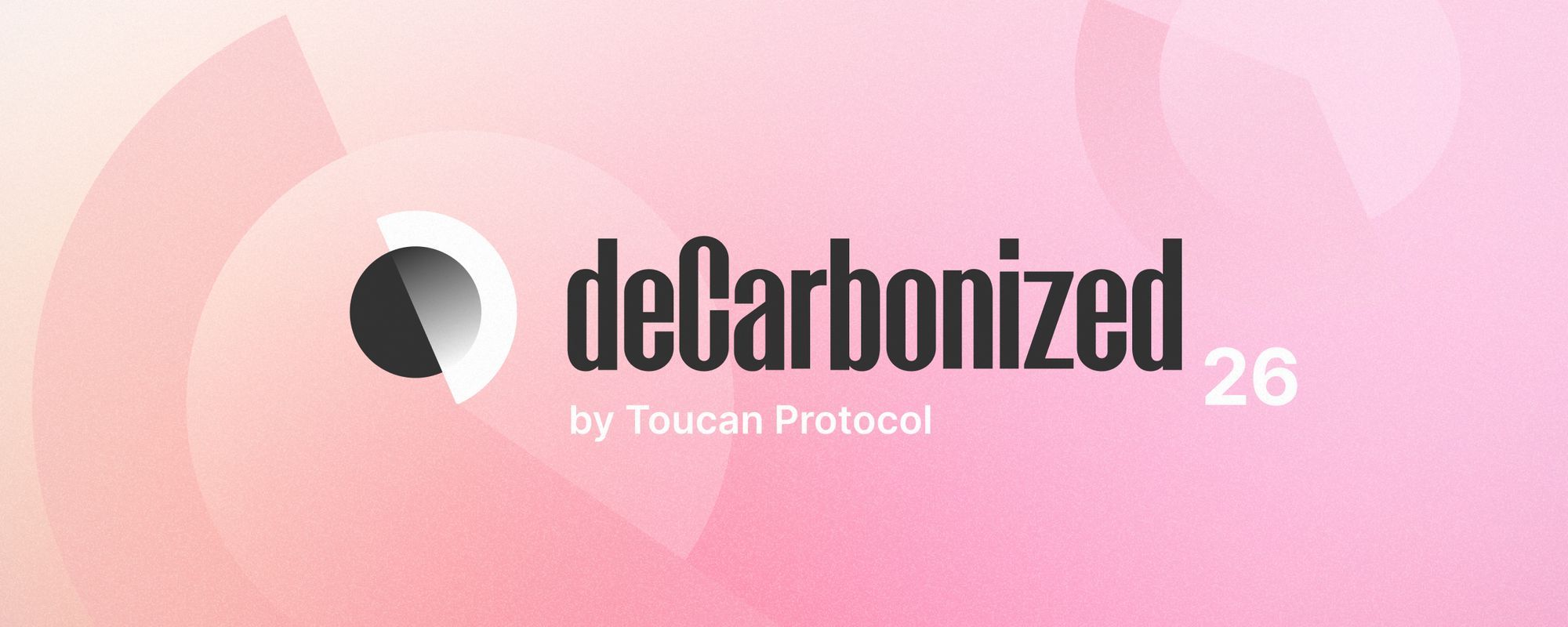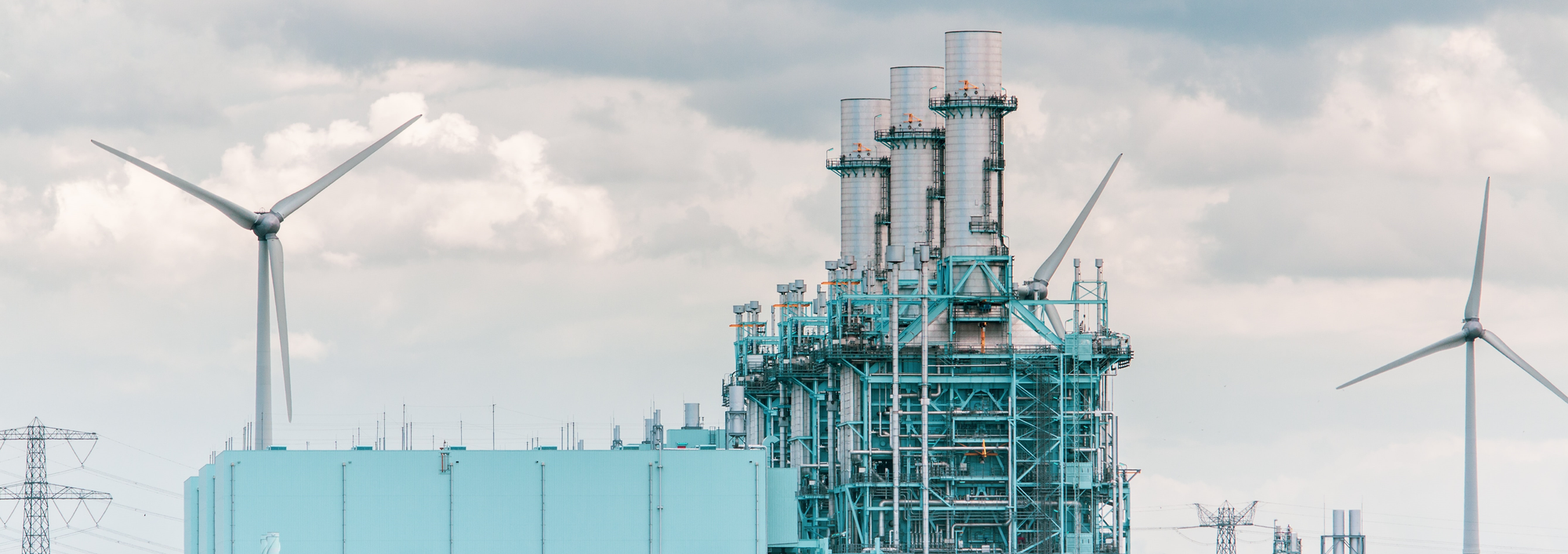deCarbonized #26: Verra tokenisation update; Ensuring quality of VCM operation; Scaling long-term CDR


💡 Spotlight story
Verra releases plan for consultation on tokenized carbon
Verra have announced plans to launch their public consultation into the use of web3 instruments in early August.
This news has been hotly anticipated by the growing community who sees tokenization as the future of climate action ever since Verra prevented further bridging of credits from its registry in May.
Verra state that they recognize both the potential opportunities and risks posed by web3 instruments, with public consultation inviting input on the following points:
- What enabling measures may be implemented to responsibly associate Verra instruments with crypto instruments or tokens
- What know-your-customer (KYC) checks should be conducted on issuers and/or holders of crypto instruments or tokens
- How the Verra Registry Terms of Use should be amended
- What fees, if any, Verra should charge in relation to crypto instruments and tokens
Toucan are excited by the potential of web3 to scale the VCM with speed and integrity. We welcome the opportunity to contribute to a productive dialogue that leads to a clear strategy on how we can work with Verra to make this a reality. We encourage openness and speed in this process in order to ensure that all market actors can engage in and benefit from ongoing innovation in the space.
Read Verra's official announcement here

📢 Top news picks
- UNESCO Biosphere and Siemens scale critical digital VCM infrastructure in the UK
- US Department of Energy launch 'Carbon Matchmaker' to support CDR projects across the country
- NovoCarbo secures €25m to launch first large-scale carbon removal parks in Germany
- Microsoft signs agreement with DAC developer Climeworks for 10,000 tonnes of carbon removal
- US forest group issues green bond to finance nature-based carbon offsets
💵 If you’re a VC or interested in more investment news, check out the web3 for climate newsletter
⛓ Market action
Fortnightly carbon stats
Toucan Protocol is building carbon market infrastructure to finance the world's best climate solutions. These are our on-chain stats from 12.07- 25.07.22:

Carbon prices as of 25.07.22, with 14 day change:
BCT - $1.90 (-1.5%) | NCT - $2.37 (-21.5%)
NGEO - $7.74 (-12.2%) | GEO - $2.92 (-26.3%) | EU-ETS - $76.15 (-7.9%)
🐦Interested in building with Toucan's on-chain carbon? Join our first ever builder call, led by the amazing Jack & Alex, today at 18:00 CET

🌟 Blog feature
Scaling VCM Integrity Pt 3: Quality of market operation 🌍
Integrity has been repeatedly identified that the largest barrier to scaling voluntary carbon markets (VCMs) in line with meeting the aims of the Paris Agreement.
In previous posts, we have explored the importance of scaling high quality supply and demand in ensuring that the VCM effectively supports net zero targets. In this final post of the series, we delve into the importance of the integrity of the market itself in making this a reality.
We discuss the impact of decisions relating to Article 6 of the Paris Agreement, the emergence of conflicting industry standards and the role web3 can play in coordinating the market into the future
Enjoy! 🌞
Prior to COP26, the VCM was viewed as separate from domestic emissions trading systems, which are generally driven by industrial cap-and-trade carbon quotas set by governments.
Recent decisions relating to Article 6 of the Paris Agreement however, have blurred the boundary between voluntary and national markets:
- Article 6.2 states that countries can now trade carbon reduction and removal credits between one another. These can count towards reaching their nationally determined contribution (NDC) to the Paris Agreement, or to broader international carbon reduction activities.
- Article 6.4 now enables all countries to use markets to enhance investment in carbon projects to increase the ambition of their NDC. This approach replaces the current Clean Development Mechanism, which only facilitated investment from the global north into renewable energy technologies in the global south.
While these updates seek to unleash the cost and time saving potential of markets on accelerating climate action, they also create the issue of the double counting of carbon credits. Double counting would occur when two countries- or the more complex scenario of one country and one non-state actor like a private firm- both try to count an emission reduction as their own.
Managing this complexity requires the development of ‘corresponding adjustments’, which ensure emissions reductions are deducted from a host country’s inventory and added to that of the purchaser accordingly. Corresponding adjustments will therefore enable the country in which the carbon credit is developed to adjust its emissions back upwards to account for the volume of credits sold to an external buyer. The host country would then need to increase other emission reduction efforts to compensate for this.
As countries begin to develop their own national carbon markets these will likely emerge at different speeds, using different platforms and approaches. Ensuring that double counting does not occur will therefore require a sound, underlying corresponding adjustments accounting system. This system is not yet present, with no agreement on exactly how these adjustments will be made.
Continue reading the full post here ✨

🔍 Research in focus
Barriers to scaling the long-term carbon dioxide removal industry
Carbonplan recently released new research examining the barriers facing the development of the long-term CDR industry. This primarily includes emerging technologies that utilise geological storage of CO2, such as direct air capture, mineralization and bio-oil.
Based on conversations with 38 key stakeholders from across the CDR value chain, results identify key areas of agreement and disagreement on what is needed to scale the market into the future.
Convergent perspectives included:
- The need for aligned, third party standards around emerging CDR technologies. This will assist in de-risking the market for the next wave of investors and standardise how removal potential is calculated and assessed.
- The public sector should play a key role in developing policies for technology scale-up.
- Costs will need to reduce to $100 a tonne if commercial deployment is to reach the levels required.
Divergent perspectives included:
- The exact role the public sector should play in accelerating scale-up. Some felt governments should set technology neutral policy, whereas others view more direct support for CDR innovation as appropriate. This included the public procurement of certain solutions.
- The role of existing carbon credit registries. Some stakeholders are seeking to develop new carbon removal methodologies with traditional registries, despite this being costly and time consuming. Others are seeking to avoid these highly critiqued actors by going to non-traditional registries.
- Involvement of multiple market actors. Some felt that brokers, advisors and market places for CDR add much needed transparency and security for still novel projects. Conversely, others expressed that these actors don’t play a role in a scaling market, due to current supply and price constraints.
Other interesting views to emerge from the research include that of potential bottlenecks in supporting CDR infrastructure, relating to the transportation of extracted CO2 and its safe long-term, geological storage. Stakeholders highlighted the need for greater investment and policy support to enable supply chain innovation in these key areas.
You can read the full report here.

💼 Jobs board
- Community Builder: Farmers & Agronomists, Indigo - US remote
- Senior Carbon Project Developer, Impact Labs - Germany remote
- Carbon Strategist, Terraformation - US remote
- Carbon Development Partner, Pachama - Global remote

🌳 Hot in web3
Toucan to embed nature-based carbon into new NFT project
Web3 project Tableland recently launched Tableland Rigs- a unique collection of NFTs with traits that can change over time. They have partnered with Toucan Protocol to offset the carbon produced to create these NFTs by retiring NCT- carbon credits produced with nature-based methodologies.
Over time, validators will be added to Tableland’s network to assess the ongoing amount of carbon produced by new developments, with further emissions offset accordingly. The initial launch will involve manual retirements of NCT, but the team is hoping to use Toucan's OffsetHelper to automate future offsets.
While Tableland and Toucan sit at different posts of the frontier of web3, this partnership demonstrates the potential of collaboration to drive climate action and embed carbon offsetting throughout the space.
Read the full announcement here.

Thank you for reading deCarbonized! 👏
Reach out to us on social and join the community ✨
Enjoy deCarbonized? Suggestions on what to cover next? Let me know! @DrHolWat
Toucan is building the technology to bring the world's supply of carbon credits onto energy-efficient blockchains and turn them into tokens that anyone can use. This paves the way for a more efficient and scalable global carbon market.

